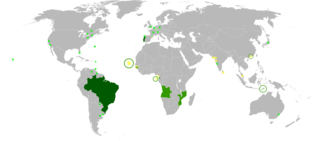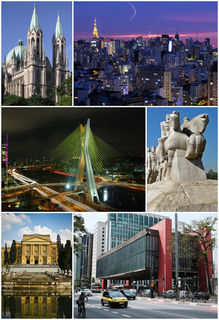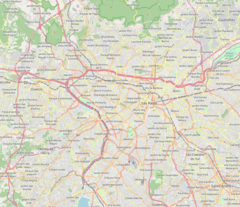
Oscar Ribeiro de Almeida Niemeyer Soares Filho, known as Oscar Niemeyer, was a Brazilian architect considered to be one of the key figures in the development of modern architecture. Niemeyer was best known for his design of civic buildings for Brasília, a planned city that became Brazil's capital in 1960, as well as his collaboration with other architects on the headquarters of the United Nations in New York. His exploration of the aesthetic possibilities of reinforced concrete was highly influential in the late 20th and early 21st centuries.

São Vicente is a coastal municipality at southern São Paulo, Brazil. It is part of the Metropolitan Region of Baixada Santista. The population is 355,542 in an area of 147.89 square kilometres.

Ibirapuera Park is an urban park in São Paulo. It comprises 158 hectares between Av. República do Líbano, Av. Pedro Alvares Cabral, and Av. IV Centenário, and is the most visited park in South America, with 14.4 million visits in 2017.
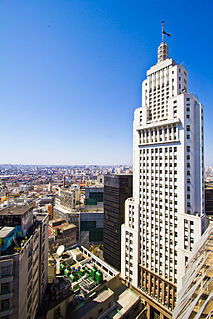
The Altino Arantes Building, also known as the Banespa Building, and most popularly by Banespão is an important skyscraper located in São Paulo, Brazil.

Edifício Itália is a 165 m (541 ft) tall 46-story skyscraper located in the República district, Central Zone of São Paulo, Brazil. Built from 1956 to 1965, it has a rooftop observation deck, open for tourists.

Martinelli Building, with 30 floors, was the first skyscraper in Brazil. It is located in São Paulo.
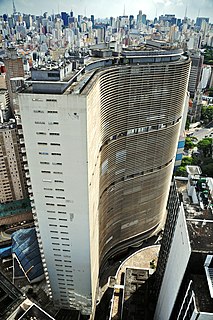
The Edifício Copan is a 118.44-metre (459 ft.) tall, 38-story residential building in downtown São Paulo, Brazil. It has 1,160 apartments and is one of the largest buildings in Brazil.
Regina Rheda is a Brazilian-born writer who lives in the United States. She is known for her prose fiction concerning urbanism, transnational migration, class conflicts, and animal rights. Before becoming a writer, she had worked with film, video and television, and she had been awarded many prizes as a writer-director of short films and videos. She earned the Jabuti prize for literature (1995) with her debut collection of short stories Arca sem Noé - Histórias do Edifício Copan, which was translated by Adria Frizzi and REYoung as Stories From the Copan Building, and included in the volume First World Third Class and Other Tales of the Global Mix. The most substantial segment in this volume is the title piece, a novel of discovery translated by David Coles and volume editor Charles A. Perrone. Rheda's book Humana Festa, A Novel has been considered a pioneer work of fiction for having veganism and the abolition of all animal exploitation as a guiding theme. Analysts have underlined originality, wit and irony in Rheda's style. Her work has interested scholars of Inter-American literature, Latin American literature, literature of Brazil, women writers, post-humanism, ecocriticism, animal studies, and veganism.

Praça da República is a park and public square in the República neighborhood of São Paulo, Brazil. The park covers several city blocks between Rua Pedro Américo, Rua Vinte e Quatro de Maio, Avenida Ipiranga, and Avenida São João in the historic center of the city. Praça da República had many names before 1889, including Largo dos Curros, Largo da Palha, Praça das Milícias, Largo Sete de Abril, and Praça 15 de Novembro.
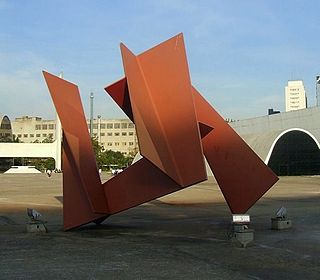
Franz Josef Weissmann was a Brazilian sculptor born in Austria, emigrating to Brazil while he was eleven years old. Geometric shapes, like cubes and squares, are strongly featured in his works. He was one of the founders of the Neo-Concrete Movement.
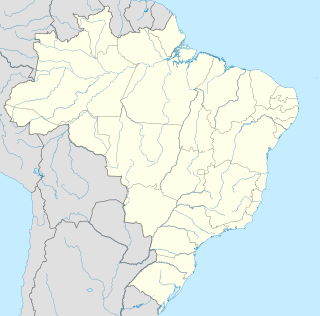
The Itatiaia Building is an apartment building in the Centro district of Campinas, São Paulo, Brazil. It was designed by the architect Oscar Niemeyer (1907-2012) in 1953 and completed in 1957. It was the only residential tower in Campinas until the early 1960s, and was the first Modernist building in the city.
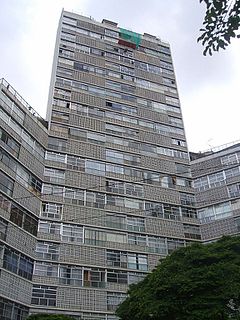
The Eiffel Building is a mixed-use building in the República district of São Paulo, Brazil. It was designed by the architect Oscar Niemeyer (1907–2012) and sits on the southwestern of Praça da República, the Square of the Republic. The building was designed in 1953 and completed in 1956. The Eiffel Building is a Brazilian example of the Cartesian skyscraper, a building type developed by Le Corbusier.
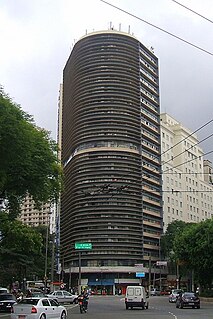
The Montreal Building is an apartment building in São Paulo, Brazil. It was designed by the architect Oscar Niemeyer (1907–2012) and executed by Carlos Lemos (1925-). The building was designed in 1950, construction began in 1951, and opened in 1954. It was one of several buildings in São Paulo commissioned by the Banco Nacional Imobiliário to meet the demand for dense, high-rise residential structures in the center of the city. The building was the first of Niemeyer's large-scale works in São Paulo; it predates the Copan, Triângulo e Califórnia buildings. Basic units in the building sold for Cr$ 280,000 at the time of its opening.

Anna Maria Niemeyer (1929–2012) was a Brazilian architect, furniture designer and gallery owner. The only daughter of Oscar Niemeyer, she worked with her father to design the civic buildings for Brasília, focusing primarily on interior spaces and decoration. When her father decided to make furniture to harmonize his structures with the design elements, she turned her interest to furniture designing. Her two most noted designs were the initial prototype called the "Alta" and the "Rio". In her latter career, she ran an art gallery in Rio, which at one time was the only gallery in the city, and assisted in the creation of the Niterói Contemporary Art Museum.
Adolf Franz Heep was a German-Brazilian architect. He is known for his work in São Paulo in the 1950s and 1960s, the period of verticalization of the city. His signature work is Edifício Itália, once the tallest building in the city of São Paulo at 165 metres (541 ft). It was designated a landmark building by the city of São Paulo in 1992. Heep also worked as an educator at Mackenzie Presbyterian University in São Paulo and later for the United Nations.
Maria Lynch is a Brazilian artist.
Hermelindo Fiaminghi was a Brazilian painter, designer, graphic designer, lithographer, professor, and art critic, known for his geometric works and exploration of color.

The Wilton Paes de Almeida Building was a high-rise building in Largo do Paiçandu, São Paulo, Brazil, that was built in the 1960s. It was listed as a historic building in 1992. It was the headquarters of the Federal Police in São Paulo from the 1980s until 2003, after which it was occupied by squatters. It caught fire and collapsed on 1 May 2018, causing at least 7 fatalities.
